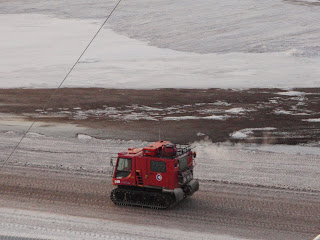
This is me at the historic "Discovery" hut of Captain Robert Falcon Scott. It was built in February 1902. It became an invaluable advance staging point for journeys for the "Discovery" expedition of 1901-04 and Scott's expedition of 1910-13. It was also used by Sir Ernest Shackleton. It was pre-fabricated in Australia and then brought here by boat for the expedition. All of their supplies are still intact and protected by the Antarctic Heritage Trust. The frozen carcass of a seal killed on the original expedition is still outside the building ready for stew meat.










.JPG)








